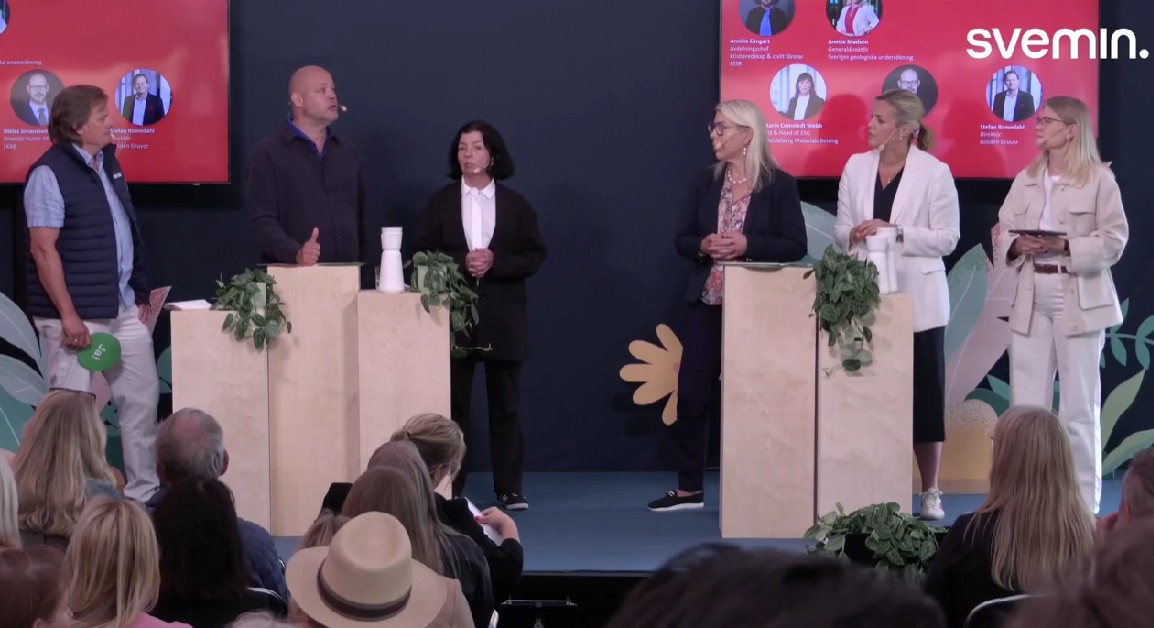Nyheter
David Hargreaves on Precious Metals week 9, 2012
Platinum continues to perplex. For so long, platinum had it over gold in both price and demand. Its lynchpin was its use in automobile exhaust catalysts where it transforms all those horrible fumes into nitrogen and water. As GDP rises, so does the demand for autos and so…fait accompli. The price is still strong, relatively, but it lags gold instead of leading it whilst not even the most serious of labour disputes in the metal’s home, Rustenberg, are boosting it. Over 17,000 workers have downed tools in the bitterest of disputes, whose reasons are far from clear. Safety-related stoppages abound and world No 3 producer Zimbabwe is playing silly beggars with the mining companies there. Perhaps instead of asking why the price is not orbiting, we should ponder what might happen when peace returns, which it will.
Central Bank Gold Buying figures are at best tardy and unreliable. Now the Financial Times tells us the People’s Bank of China has been a significant buyer, 227 tonnes, in the last three months of 2011. Maybe. Mine production would have been about 100 tonnes, whilst the WGC says domestic demand was 191 tonnes, so there is a gap of about 136 tonnes.
There is much scepticism about this having gone straight into the vaults to boost the 1054 tonnes officially held there. Even if it did, there is far to go before they approach the c. 9000 tonnes held by Fort Knox. Official figures are due out next month.
Whither the gold price? The Gold Report has interviewed one Greg McCoach whose contribution to forecasting includes his “Insider Alert” service. He says gold is going to $6000/oz dragging silver to $70/oz. Now, he doesn’t say when. He goes on to remind us that just to cover the world’s debts it would need to be $19,500/oz. Maybe he has not factored in that for every debtor there has to be a  creditor, so world debt nets out to zero. The creditors for the most part are pensioners, hostage to banks, funds, governments, etc., but let’s not go there. No Greg, the true price of gold is at $40,000/oz, that is when we get back to a gold standard and all the paper dollars are divided into all the surface gold. Like you, Greg, we have no idea when that might be. Next he has silver at $400-500/oz against gold at $6000-10,000. Let’s just hear it for a drop of cold water here. Sure, silver is poor person’s gold, but 60% or more of it is used in industry and surface supplies are daunting. At the right price, commercial demand will dry up and all those coins will be melted down.
creditor, so world debt nets out to zero. The creditors for the most part are pensioners, hostage to banks, funds, governments, etc., but let’s not go there. No Greg, the true price of gold is at $40,000/oz, that is when we get back to a gold standard and all the paper dollars are divided into all the surface gold. Like you, Greg, we have no idea when that might be. Next he has silver at $400-500/oz against gold at $6000-10,000. Let’s just hear it for a drop of cold water here. Sure, silver is poor person’s gold, but 60% or more of it is used in industry and surface supplies are daunting. At the right price, commercial demand will dry up and all those coins will be melted down.
The world needs fly-away price theorists, if only for amusement value. We do not presently subscribe. India’s 2012-13 Gold imports may fall 35%, says a government panel. They topped $58 bn in 2011 (that’s about 1,000 tonnes), but will dip to $38bn this year. It still hits the current account deficit and with inflation at 5-6%, becomes less attractive. Import duties are now 2% on value of gold and 6% on silver. There is no suggestion of imports being banned.
And silver? Today the gold price is about 50x that of silver and its newly mined production about one fifteenth. India takes in about 1000 tonnes, one-third of all gold mined annually and traditionally about 3000 tonnes of silver. So the ratios are askew. In 2011 the country imported 4800 t and looks to do 5000t this year. Are these sizeable increases a reflection fo the rising gold price? Highly likely, particularly as gold imports are forecast to drop below 900t. So the price ratio could well be persuaded to narrow in favour of silver.
[hr]
About David Hargreaves
David Hargreaves is a mining engineer with over forty years of senior experience in the industry. After qualifying in coal mining he worked in the iron ore mines of Quebec and Northwest Ontario before diversifying into other bulk minerals including bauxite. He was Head of Research for stockbrokers James Capel in London from 1974 to 1977 and voted Mining Analyst of the year on three successive occasions.
Since forming his own metals broking and research company in 1977, he has successfully promoted and been a director of several public companies. He currently writes “The Week in Mining”, an incisive review of world mining events, for stockbrokers WH Ireland. David’s research pays particular attention to steel via the iron ore and coal supply industries. He is a Chartered Mining Engineer, Fellow of the Geological Society and the Institute of Mining, Minerals and Materials, and a Member of the Royal Institution. His textbook, “The World Index of Resources and Population” accurately predicted the exponential rise in demand for steel industry products.
Nyheter
USA ska införa 50 procent tull på koppar

USA:s president Donald Trump har precis meddelat att landet ska införa en tull på 50 procent på basmetallen koppar. Priset på råvarubörsen i USA stiger omgående med 10 procent.
USA har viss inhemsk produktion av koppar, men den inhemska efterfrågan överstiger produktionen. Därför måste landet importera koppar för att täcka behovet, särskilt för användning inom elnät, elektronik, byggindustri och fordonssektorn. De största exportörerna till USA är Chile, Kanada, Mexiko och Peru.
När tullar av denna typ införs uppstår prisskillnader i världen. Handlar man koppar på börsen är det därför viktigt att veta vilken börs man handlar på eller om man använder certifikat så är det viktigt att veta vilka underliggande värdepapper de följer.
Sedan är det som alltid med Trump, begreppet är som bekant TACO, Trump Always Chickens Out. Man ska alltså inte ta några definitiva stora beslut baserat på vad han säger. Saker och ting kan ändra sig från dag till dag.
Nyheter
Ryska staten siktar på att konfiskera en av landets största guldproducenter

En våg av panik sprider sig bland Moskvas elit sedan Vladimir Putins regim inlett en dramatisk offensiv för att beslagta tillgångarna hos Konstantin Strukov – en av Rysslands rikaste affärsmän och ägare till landets största guldgruvföretag, Yuzhuralzoloto. Åtgärden ses som ett tydligt tecken på hur långt Kreml är villigt att gå för att säkra ekonomiska resurser i takt med att kostnaderna för kriget i Ukraina stiger.
Strukovs förmögenhet, som uppskattas till över 3,5 miljarder dollar, byggdes upp under decennier i nära relation med maktens centrum i Ryssland. Men den 5 juli stoppades hans privatjet från att lyfta mot Turkiet. Enligt flera ryska medier deltog den federala säkerhetstjänsten FSB i ingripandet, och Strukovs pass beslagtogs. Händelsen ska vara kopplad till en omfattande rättsprocess där åklagare kräver att hela hans företagsimperium förverkas – med hänvisning till påstådd korruption och användning av skalbolag och familjemedlemmar för att dölja tillgångar.
Företaget själva förnekar att något inträffat och kallar rapporteringen för desinformation. De hävdar att Strukov befann sig i Moskva hela tiden. Trots det bekräftar rättsdokument att både han och hans familj förbjudits att lämna landet, och att myndigheterna snabbt verkställt beslutet.
Det som nu sker är en del av ett större mönster i ett Ryssland präglat av krigsekonomi: staten tar tillbaka kontrollen över strategiska sektorer som guld, olja och försvarsindustri – industrier som nu allt mer mobiliseras för att finansiera och stödja krigsinsatsen. Intressant nog handlar det inte om att Strukov ska ha varit illojal mot regimen – tvärtom har han varit en lojal allierad, med politiska uppdrag knutna till Putins parti. Men lojalitet räcker inte längre som skydd.
Medan tidigare utrensningar ofta riktade sig mot krigskritiker eller de som flydde landet, drivs dagens tillgångsövertaganden av något mer fundamentalt: ekonomisk nöd. De växande sanktionerna har nästan helt strypt inflödet av utländskt kapital. Statens oljeintäkter minskar och budgetunderskotten växer. Putins lösning är att vända sig inåt – till de oligarker han själv lyfte fram – för att fylla statskassan.
Det här är inte ett enskilt fall. På senare tid har flera framstående affärspersoner hamnat i plötsliga rättsliga tvister, omkommit under mystiska omständigheter eller sett sina bolag tas över av staten. Den oskrivna överenskommelsen som länge gällde i Putins Ryssland – rikedom i utbyte mot lojalitet – håller på att kollapsa.
Den 8 juli väntar en rättsförhandling som kan avgöra framtiden för Strukovs affärsimperium. Men budskapet till Rysslands näringslivselit är redan tydligt: ingen är för rik, för lojal eller för nära den politiska makten för att gå säker. I ett Ryssland där kriget kräver allt större uppoffringar riskerar oligarker att snabbt förvandlas till måltavlor.
Nyheter
Hur säkrar vi Sveriges tillgång till kritiska metaller och mineral i en ny geopolitisk verklighet?

När världsläget förändras ställs Europas beroende av metaller och mineral på sin spets. Geopolitiska spänningar, handelskonflikter och ett mer oförutsägbart USA gör att vi inte längre kan ta gamla allianser för givna. Samtidigt kontrolleras en stor del av de kritiska råvarorna vi är beroende av av andra makter – inte minst Kina. Vad händer med Sveriges industriella förmåga i ett läge där importen stryps? Hur påverkas försvarsindustrin av Kinas exportrestriktioner? Är EU:s nya råvarupolitik tillräcklig för att minska sårbarheten – eller krävs ytterligare statliga insatser och beredskapslagring? Svemin anordnade den 25 juni ett seminarium som bestod av bestod av deltagare från myndigheter, politik och industri. Man diskuterar Sveriges och EU:s strategiska vägval i en ny global verklighet – och vad som krävs för att säkra tillgången till metaller när vi behöver dem som mest.
-

 Nyheter3 veckor sedan
Nyheter3 veckor sedanMahvie Minerals växlar spår – satsar fullt ut på guld
-

 Nyheter4 veckor sedan
Nyheter4 veckor sedanUppgången i oljepriset planade ut under helgen
-

 Nyheter4 veckor sedan
Nyheter4 veckor sedanLåga elpriser i sommar – men mellersta Sverige får en ökning
-

 Nyheter3 veckor sedan
Nyheter3 veckor sedanOljan, guldet och marknadens oroande tystnad
-

 Analys3 veckor sedan
Analys3 veckor sedanA muted price reaction. Market looks relaxed, but it is still on edge waiting for what Iran will do
-

 Nyheter3 veckor sedan
Nyheter3 veckor sedanJonas Lindvall är tillbaka med ett nytt oljebolag, Perthro, som ska börsnoteras
-

 Analys4 veckor sedan
Analys4 veckor sedanVery relaxed at USD 75/b. Risk barometer will likely fluctuate to higher levels with Brent into the 80ies or higher coming 2-3 weeks
-

 Nyheter3 veckor sedan
Nyheter3 veckor sedanDomstolen ger klartecken till Lappland Guldprospektering















